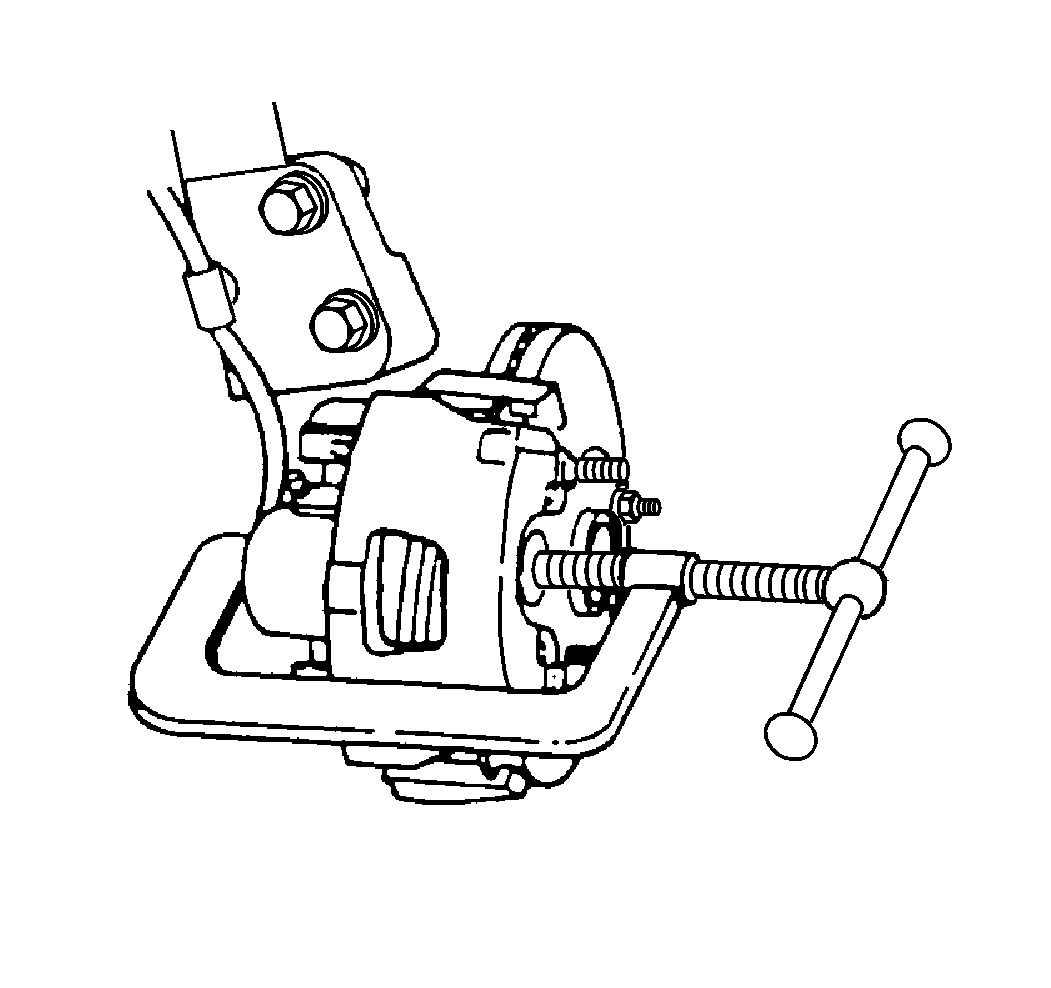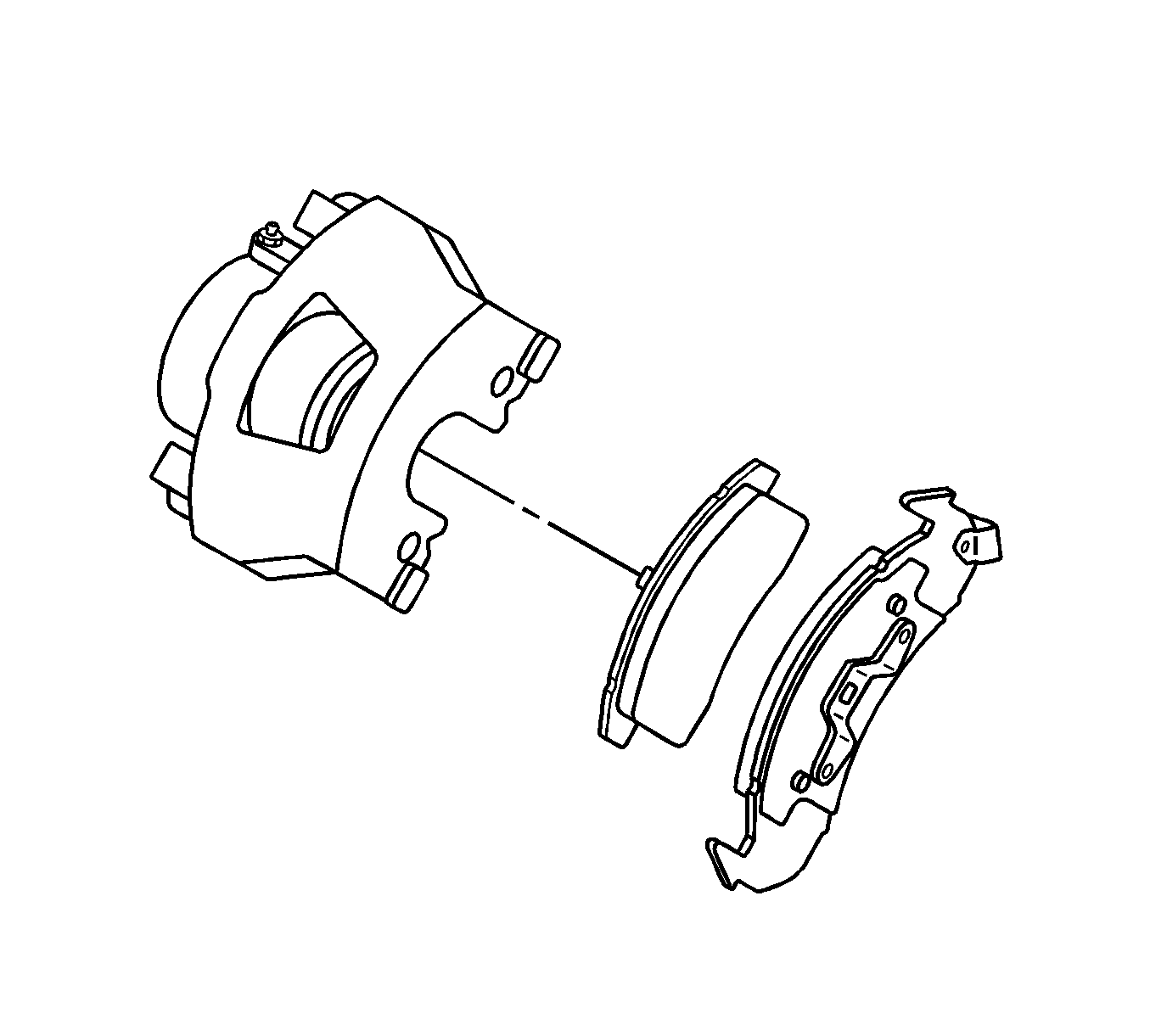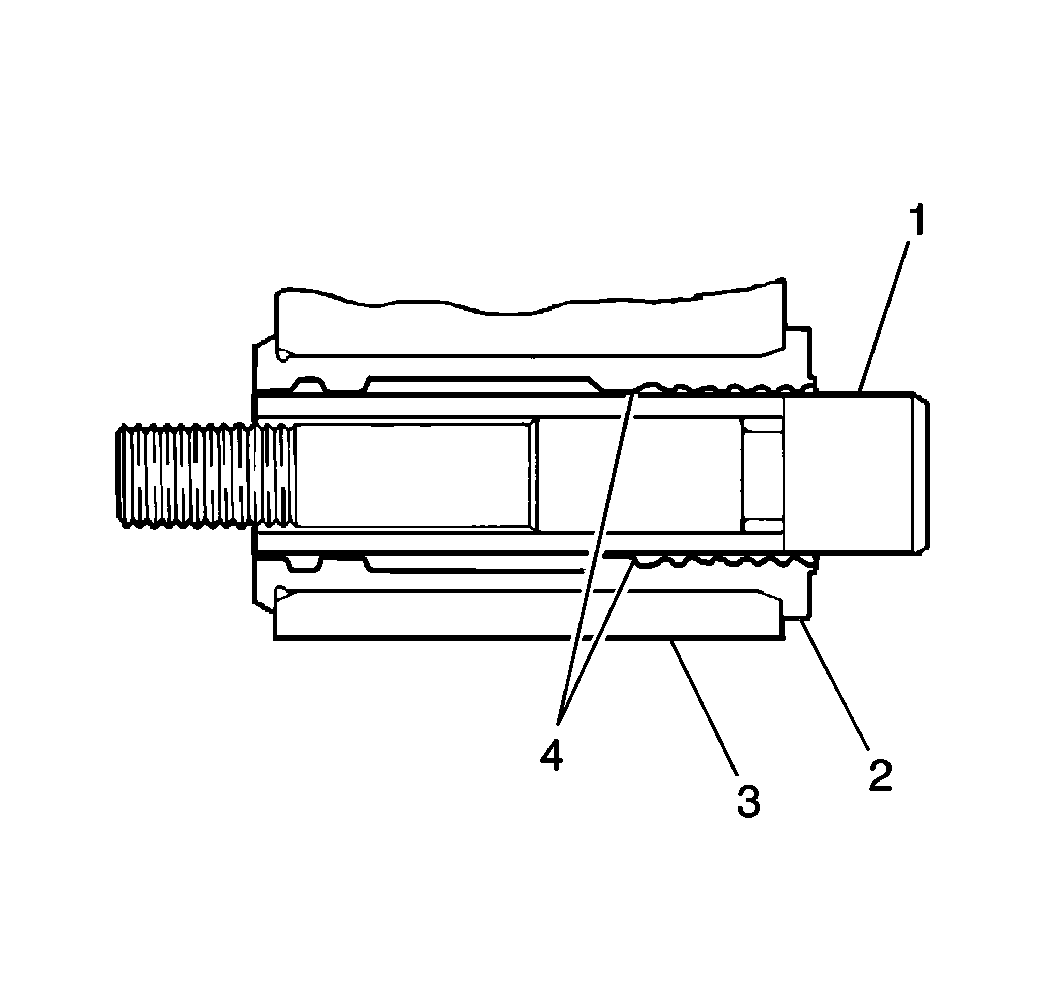Caution: Refer to Brake Dust Caution in the Preface section.
Caution: Refer to Brake Fluid Irritant Caution in the Preface section.
- Inspect the fluid level in the brake master cylinder reservoir.
- If the brake fluid level is midway between the maximum-full point and
the minimum allowable level, no brake fluid needs to be removed from the reservoir
before proceeding.
- If the brake fluid level is higher than midway between the maximum-full
point and the minimum allowable level, remove brake fluid to the midway point before
proceeding.

- Install a large C-clamp, over the body of
the brake caliper with the C-clamp ends against the rear of the caliper body and
against the outer brake pad.
- Tighten the C-clamp until the caliper piston is compressed into
the caliper bore leaving a gap of approximately 10 mm (0.38 in) between
the disc brake pads and the brake rotor.
- Remove the C-clamp from the caliper.
- Grasp the brake caliper and attempt to move the brake caliper vertically.
The brake caliper should not exhibit excessive looseness.
- Grasp the brake caliper and move the brake caliper inboard and outboard.
The brake caliper should slide smoothly with minimal force.

- Inspect the disc brake pad retainers.
- Inspect the disc brake pad mounting hardware and the disc brake pads for
the following:
| • | Looseness at the steering knuckle |
| • | Looseness at the disc brake pads |
| • | Missing mounting hardware |
- If any of the conditions listed are found, the disc brake pads require
replacement.
- Ensure the disc brake pads are held firmly in place on the steering knuckle,
yet slide easily on the knuckle without binding.

- Inspect the brake caliper bolts (1)
by gently pulling the caliper outward, then push the caliper inward, and observe
for the following:
| • | Bent or damaged brake caliper bolts (1) |
| • | Bent or damaged brake caliper assembly |
| • | Restricted caliper sliding movement |
| • | Split or torn bushings (2) |
| • | Looseness in the brake caliper assembly |
- If any of the conditions listed are found, the brake caliper mounting
hardware requires replacement.



